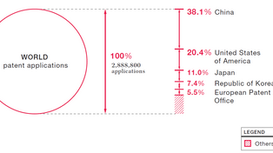How does the international community protect genetic resources?
- Admin

- May 23, 2023
- 1 min read

Prior to the adoption of the Convention on Biological Diversity (CBD) in 1992, genetic resources were not legally protected and considered a common asset of humankind. Developed countries used their technological superiority to exploit genetic resources from developing countries, reaping significant economic gains. The CBD introduced the principle of state sovereignty over genetic resources, allowing member states to share benefits from their use through “prior informed consent” and “mutually agreed terms”. The voluntary Bonn Guidelines on Access to Genetic Resources and Fair and Equitable Sharing of the Benefits Arising Out of Their Utilization passed in 2002, provided a procedural guide for access to genetic resources and benefit-sharing mechanisms. The Nagoya Protocol of 2010 further clarified the rules for the collection of organisms and distribution of benefits. Some countries, such as China, have included the protection of genetic resources in their patent systems, prohibiting the granting of patent rights for inventions derived from illegally obtained or used genetic resources.






































Comments